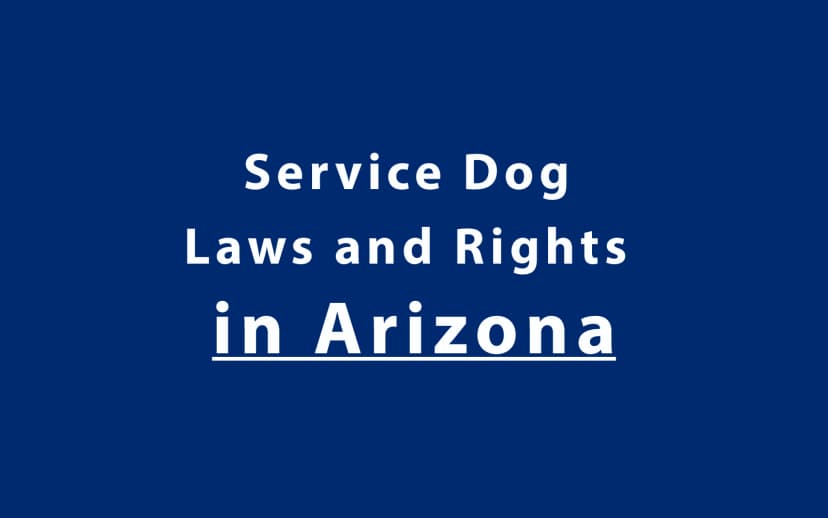PSD Airline Policies: What You Need to Know for Traveling with a Psychiatric Service Dog

Traveling with a psychiatric service dog (PSD) can seem like a daunting process, but it doesn’t have to be. With the right preparation, knowledge, and understanding of airline policies, you can make flying with your service dog a seamless experience. In this article, we’ll explore the key aspects of flying with a psychiatric service dog, focusing on the laws and regulations that protect you as a handler, the requirements of major airlines, and practical tips for ensuring smooth travel.
Introduction to PSD Airline Policies
Psychiatric service dogs are highly trained animals that assist individuals with psychiatric disabilities such as PTSD, anxiety, and depression. Unlike emotional support animals (ESAs), PSDs are trained to perform specific tasks to help their handlers manage their symptoms in public. These tasks could include guiding them to a safe place during a panic attack, reminding them to take medication, or providing deep pressure therapy during moments of distress.
It is crucial to understand airline policies regarding psychiatric service dogs, as many individuals with PSDs rely on air travel for both personal and professional reasons. Having a clear grasp of these policies can ensure that you and your PSD are treated fairly and legally. Under the Air Carrier Access Act (ACAA), airlines are prohibited from discriminating against individuals with disabilities, including those traveling with PSDs.
Air Carrier Access Act (ACAA) Overview
The Air Carrier Access Act (ACAA) is a U.S. law that prohibits discrimination on the basis of disability by any airline that operates within or outside the U.S. This law ensures that passengers with disabilities, including those who rely on psychiatric service dogs, can access air travel without unnecessary hindrances.
For passengers traveling with a PSD, the ACAA provides essential protections, such as:
• Right to travel: Passengers with PSDs are entitled to bring their service dogs into the cabin of the aircraft.
• No extra charges: Airlines are prohibited from charging extra fees for passengers traveling with service animals.
• No restrictions on breed or size: Airlines cannot impose breed or size restrictions for psychiatric service dogs, as long as the dog is trained to assist with a disability.
• Behavior standards: Passengers are required to maintain control of their PSD at all times, and dogs must be well-behaved and under control.
However, airlines can require passengers to submit certain documentation, such as a signed letter from a licensed healthcare provider, to verify that the animal is indeed a service animal.
General Guidelines for Flying with a PSD
When flying with a psychiatric service dog, it’s essential to prepare both yourself and your dog to ensure a smooth journey. Here are a few important considerations:
Documentation and Preparation
Before traveling, you’ll likely need to provide proof that your dog is a legitimate psychiatric service dog. This typically includes a PSD letter from a licensed mental health professional, which certifies that you have a psychiatric disability and that the dog helps mitigate its effects. Some airlines may require a service dog form with additional details like your dog’s training and vaccination records.
Arrival and Check-In
Arriving at the airport early is crucial, especially if you’re flying with a service dog. This will give you time to check in and address any potential issues that might arise. You will need to inform the airline of your PSD ahead of time, usually at least 48 hours before the flight, although requirements vary depending on the airline.
Airport Procedures
Expect some additional steps at the airport, such as a possible security check. Your dog will likely need to be walked through the security screening process, but it should not have to go through the body scanner. The Transportation Security Administration (TSA) staff will screen your dog using alternate methods, including a hand-held metal detector.
In-Flight Behavior
During the flight, your PSD must remain under control. This means they must not bark excessively, create a disturbance, or block aisles or exits. Airlines expect your dog to be well-behaved and to stay seated during the flight, and you may be asked to place your dog on the floor if it’s too large to sit on your lap.
Major Airline Policies on PSDs
When traveling by air with a psychiatric service dog (PSD), understanding the policies of each airline is crucial to ensure a smooth journey. Airlines are required by law to accommodate individuals with disabilities and their service animals, including psychiatric service dogs, under the Air Carrier Access Act (ACAA). However, each airline may have its own procedures, documentation requirements, and specific conditions. Below is a breakdown of major airlines’ policies for PSDs, including what is expected when flying with a PSD, and links to the airlines’ official websites for further details.
American Airlines
• Policy: American Airlines welcomes psychiatric service dogs on board, as long as they are properly trained to perform specific tasks related to the handler’s disability.
• Documentation: American Airlines may require the submission of specific forms for your service dog, including a Service Animal Form.
• Travel Guidelines: PSDs are allowed to sit at the handler’s feet or in the space provided for their carrier under the seat in front. They should be under control at all times.
• Additional Requirements: American Airlines also requests that the dog remains leashed or harnessed while in public spaces, including airport terminals.
American Airlines Service Animal Policy
Delta Airlines
• Policy: Delta allows psychiatric service dogs to fly with their owners, but there are specific forms to fill out, and advance notice may be required (usually 48 hours before departure).
• Documentation: You must complete the Delta Service Animal Verification Form which includes information about your dog’s behavior and training.
• Travel Guidelines: PSDs must remain in the aisle, at the feet of the handler or in the space provided for a carrier, without obstructing any exits or walkways. If the animal becomes disruptive, it may be asked to leave the plane.
• Additional Requirements: Delta has specific rules regarding the types of animals allowed, and emotional support animals are subject to stricter restrictions starting in 2021.
Delta Airlines Service Animal Policy
United Airlines
• Policy: United Airlines allows passengers with disabilities to bring their psychiatric service dogs into the cabin.
• Documentation: A Medical Verification Form is needed if you plan to bring your PSD on board. You must also notify the airline at least 48 hours in advance.
• Travel Guidelines: The dog must be able to sit on the floor or in a designated area without blocking the aisle or exit path. If the animal becomes disruptive or aggressive, it may be asked to leave.
• Additional Requirements: United Airlines requires that PSDs be under the handler’s control and well-behaved throughout the flight.
United Airlines Service Animal Policy
Southwest Airlines
• Policy: Southwest Airlines allows PSDs to travel in the cabin with passengers, provided that the dog is trained to assist with the handler’s disability.
• Documentation: Southwest requires a Disability-Related Service Animal Form, which includes a statement from your physician or healthcare provider.
• Travel Guidelines: The dog must be seated at your feet or in an area designated for pets. The animal should not obstruct pathways or emergency exits.
• Additional Requirements: Southwest also requests that you inform them at least 48 hours in advance of your travel to ensure proper arrangements are made.
Southwest Airlines Service Animal Policy
JetBlue Airways
• Policy: JetBlue welcomes psychiatric service dogs on board and offers guidelines for traveling with them in the cabin.
• Documentation: JetBlue requires a Service Animal Policy Form and may request additional documentation regarding the dog’s behavior and training.
• Travel Guidelines: PSDs should be seated at the passenger’s feet or in the space beneath the seat. The animal must remain under control throughout the flight.
• Additional Requirements: JetBlue requires that PSDs be kept under control at all times and asks passengers to notify them in advance for a smoother boarding process.
JetBlue Airlines Service Animal Policy
Alaska Airlines
• Policy: Alaska Airlines allows PSDs in the cabin free of charge as long as they are under control and do not pose a threat to others.
• Documentation: You are required to complete the Service Animal Travel Form, which provides details about your PSD’s training and behavior.
• Travel Guidelines: PSDs should stay at your feet or in a designated space. The animal should not disrupt the flight or obstruct aisles or emergency exits.
• Additional Requirements: Passengers are encouraged to notify the airline ahead of time and to keep their dog under control throughout the flight.
Alaska Airlines Service Animal Policy
Documentation and Certification for Flying with a PSD
While the exact requirements vary by airline, all major U.S. carriers require that passengers traveling with a psychiatric service dog provide some form of documentation. Typically, airlines will ask for:
• A signed letter from a licensed healthcare provider, including a description of your disability and the role of the PSD.
• Training records for the dog, demonstrating that the animal has been properly trained to perform tasks related to your disability.
• Vaccination records to ensure the dog is healthy and up to date on required shots.
It’s essential to ensure that the documentation provided is accurate, up-to-date, and in accordance with the airline’s guidelines to avoid complications at the airport.
Behavior Expectations and Rules During the Flight
Airlines hold passengers responsible for the behavior of their service dogs. If a dog becomes aggressive, disruptive, or unmanageable, the airline may refuse to allow the dog to board the flight. To prevent this, it’s important to train your dog in basic obedience, as well as tasks specific to your disability, so they are prepared for the stress of air travel.
Accommodations for Passengers Traveling with PSDs
Airlines provide several accommodations for passengers with psychiatric service dogs. Typically, the dog will sit on the floor in front of the passenger or at their feet, but larger dogs may require special seating arrangements. Airlines may also allow passengers to board early to ensure they and their PSD have enough space.
Common Problems and Solutions When Flying with a PSD
Although the laws and policies are clear, issues can still arise. Some passengers report misunderstandings with airline staff or other travelers, especially if the handler’s disability isn’t visibly apparent. If your PSD is denied boarding or if you experience any issues, it’s important to remain calm and assertive. Present your documentation and reference the relevant laws if needed.
What to Do if Your Psychiatric Service Dog Is Denied Boarding
In the rare event that your PSD is denied boarding, passengers should know their rights under the ACAA and other disability protection laws. Airlines cannot deny you boarding solely because you have a PSD, unless there is a legitimate concern for safety or your dog is disruptive.
Emerging Trends in PSD Airline Policies
Airline policies continue to evolve, especially as more people with disabilities are traveling with psychiatric service dogs. Post-pandemic, many airlines are reevaluating their policies to accommodate passengers while maintaining safety and comfort for everyone.
Conclusion: Navigating Airline Policies for PSDs
Understanding airline policies for psychiatric service dogs is essential for ensuring a stress-free flight. By familiarizing yourself with the laws, preparing necessary documentation, and knowing what to expect, you can travel with your PSD confidently and legally.
Always remember that the law is on your side—your rights to travel with a psychiatric service dog are protected, and with the right knowledge, you can ensure a smooth journey for both you and your service dog.



